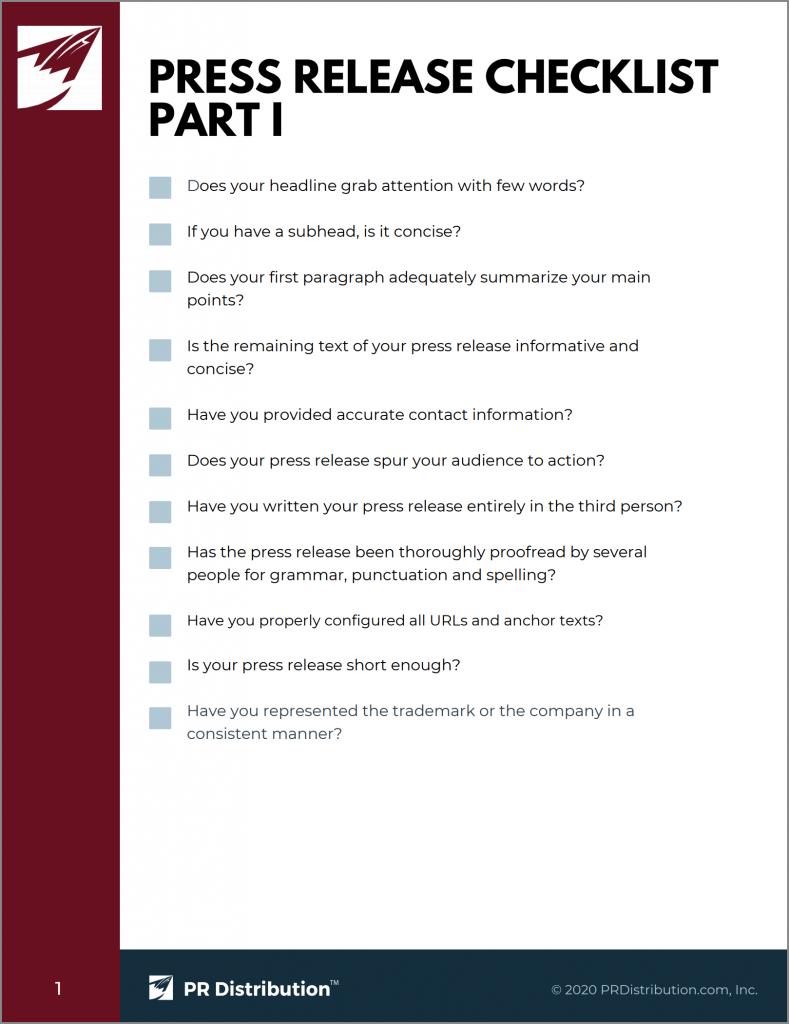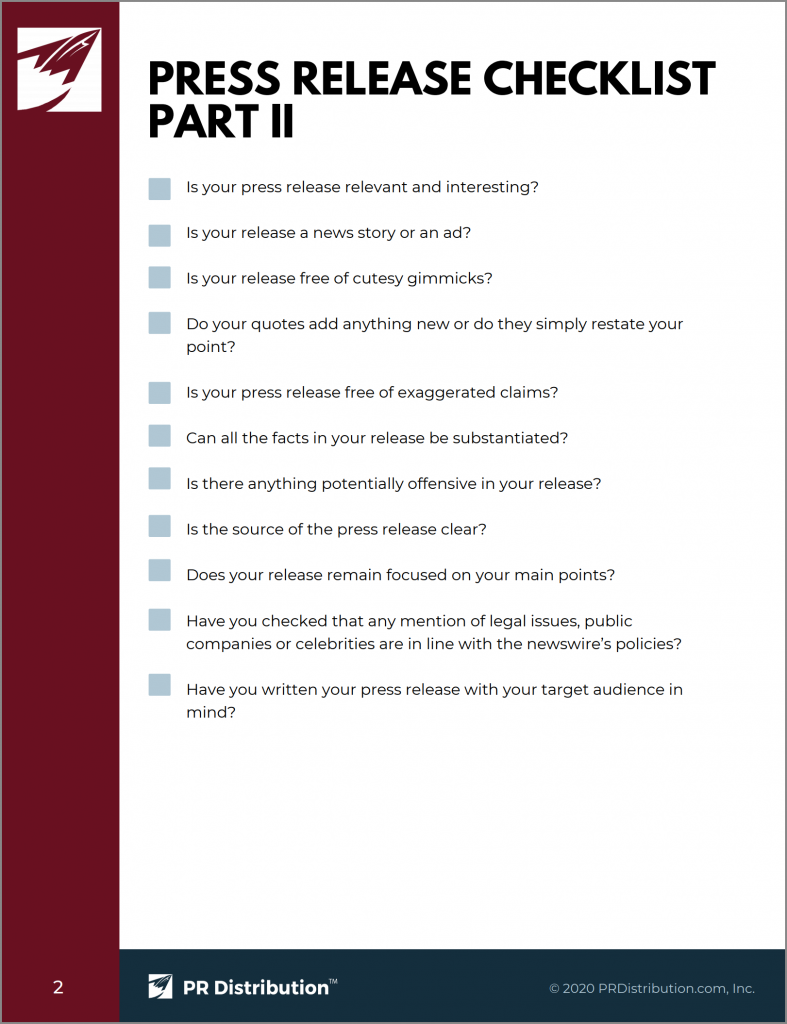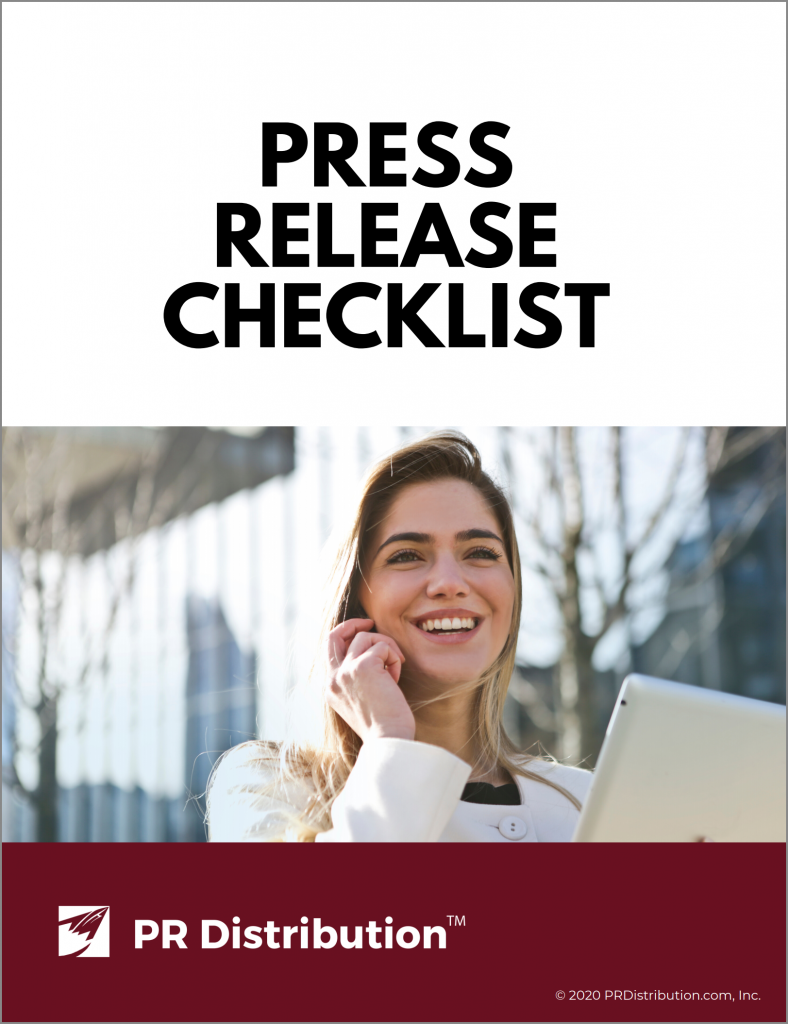I have seen tens of thousands of press releases come in through the PR Distribution™ platform. Many of these press releases are newsworthy and well written while some press releases need a lot of help. I worked with my team to put together a press release inspection checklist that we often refer those latter customers to so they can write a compelling press release that gets picked up by media outlets.
I have included screenshots of the point briefs from our 22-point Press Release Checklist, which is a 10 page PDF that explains each of these points in detail. You can get the complete PDF checklist for free here.
I have also included my favorite expanded explanations on a few of the point briefs that I think would be the most helpful.


Does your headline grab attention with few words?
You never get another chance to make a first impression! Your headline is the chance to do just that. Don’t fall into the trap of overwriting or underwriting your headline. Make sure it is a complete sentence which clearly states your purpose. Try to avoid exaggeration and farfetched claims – and above all, exclamation points. Make sure you include your company name and an active verb. The reason for the press release is very important in order to grab the attention of your audience. Practice reading your press release out loud to make sure you can deliver the message clearly.
Does your first paragraph adequately summarize your main points?
A press release is not a good place to utilize the element of surprise. Your goal here is to put everything important right there in the beginning. Let’s say you get an email from your boss with a subject line that reads “We have a problem”. Now let’s say that the text of the email consists of several paragraphs describing various seemingly unrelated topics before finishing with the conclusion: “And then you have failed to meet several deadlines on time. Please explain why or we may have to terminate you.” Your audience does not have time for longwinded explanations. Remember the 5W’s – Who, What, When, Where, Why. Produce these clearly and succinctly in your opening. Grab your audience’s attention sufficiently to make them want to keep reading.
Does your press release spur your audience to action?
This part is the easiest. All you need to do here is issue a simple invitation, such as.: “For more information, like us on Facebook”; “Please visit our website to find samples of our work; “Please give send us an email to arrange a meeting.” Such calls to action allow your press release to have a lasting effect.
Have you properly configured all URLs and anchor texts?
Your website is a valuable asset. Your press release should make it easy to visit. Always go back and check that your URLs are spelled correctly and display the http:// prefix. In this way, visitors can more easily click-through on sites that post your release. If you are posting pages at the last minute in order to mention them in your press release, test the page links in your release before issuing it. Sadly, one often finds press releases littered with the debris of dead links resulting from pages that are posted too hastily, without being checked. Also check links that are embedded behind keywords (“anchor text”) to make sure that they work properly. Don’t overdo it with the links, though. Too many may cause your release to get filed as “spam.” Two or three links are enough.
Is your press release relevant and interesting?
Make sure that your release contains information that someone other than you or your company might want to know. Companies are limited in the number of press releases they can send out. The news has to matter. Ask yourself if this topic is important and relevant enough right now for a journalist to take time to report on it.
Is your release a news story or an ad?
Ask yourself about the purpose of your release. Is your goal to inform, or is it to sell a product? Press releases are supposed to be an oasis of credibility in a materialistic world. They build good relationships with media and with consumers. While direct marketing can produce more immediate results, the subtle effects of a press release are more long-term. A journalist reporting the facts has more credibility than a company making exaggerated claims about its product. Take the time now to educate the media in order to build lasting rapport with consumers.



